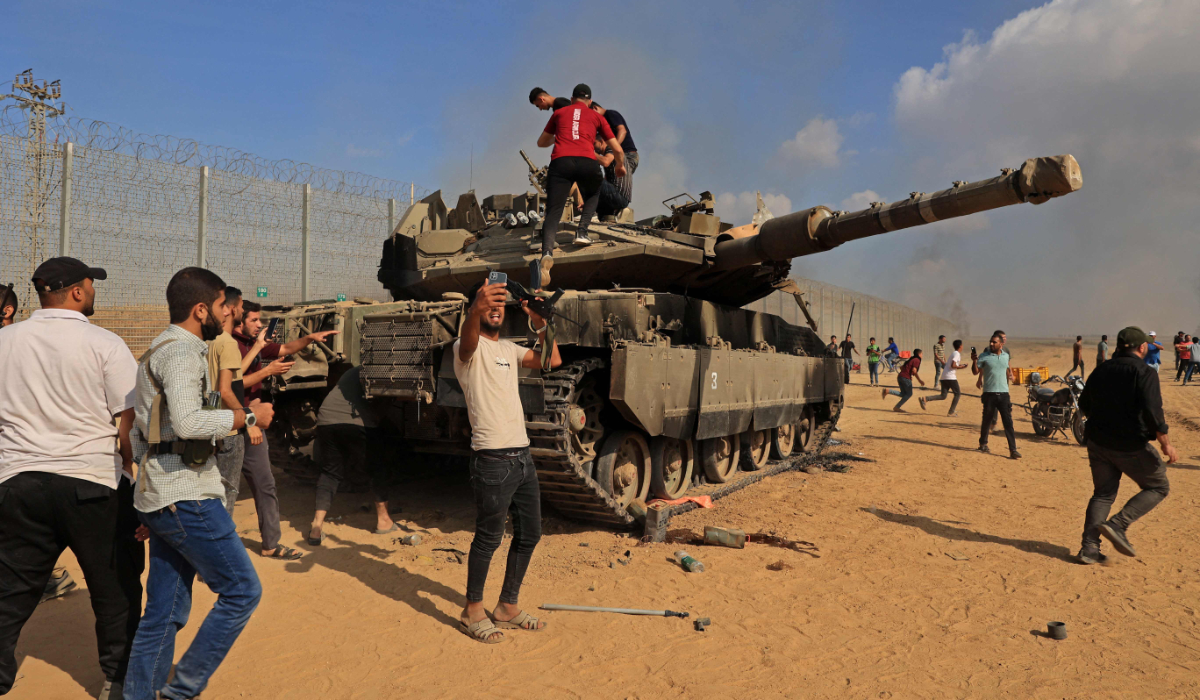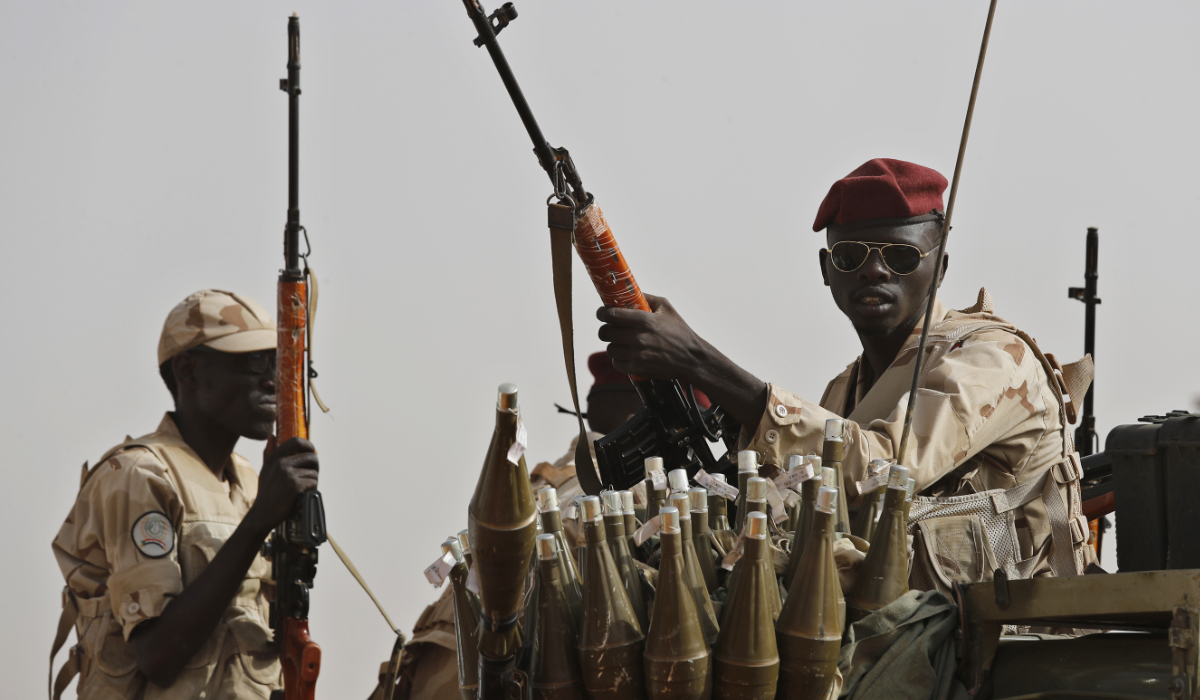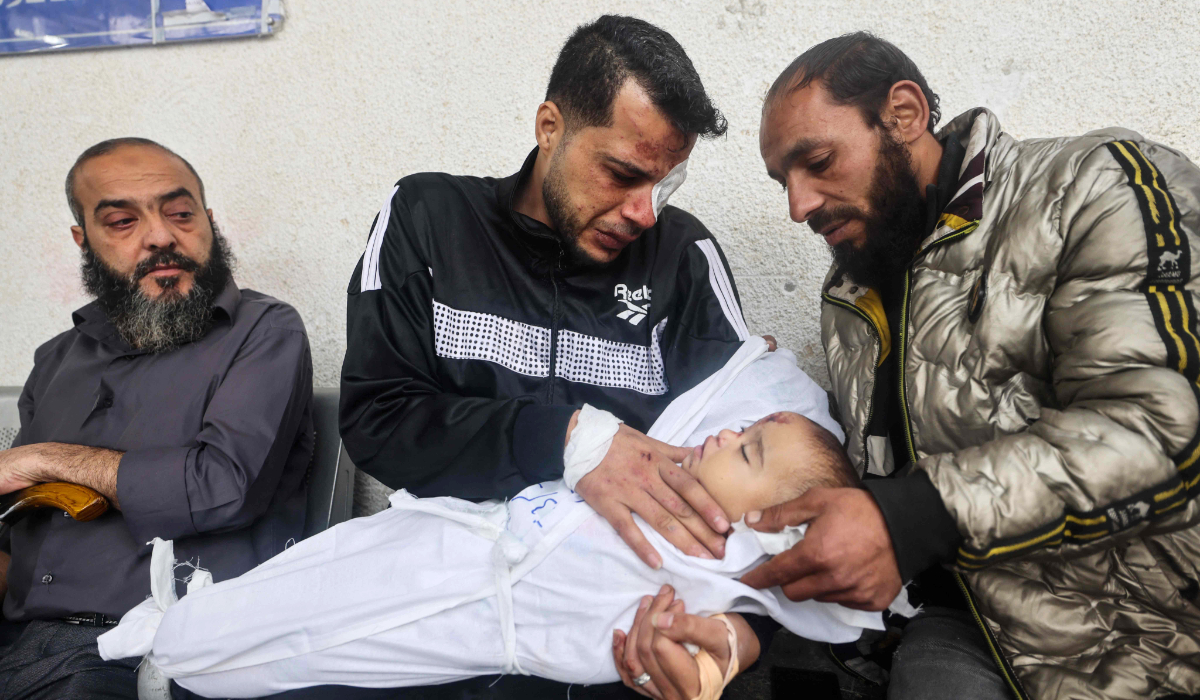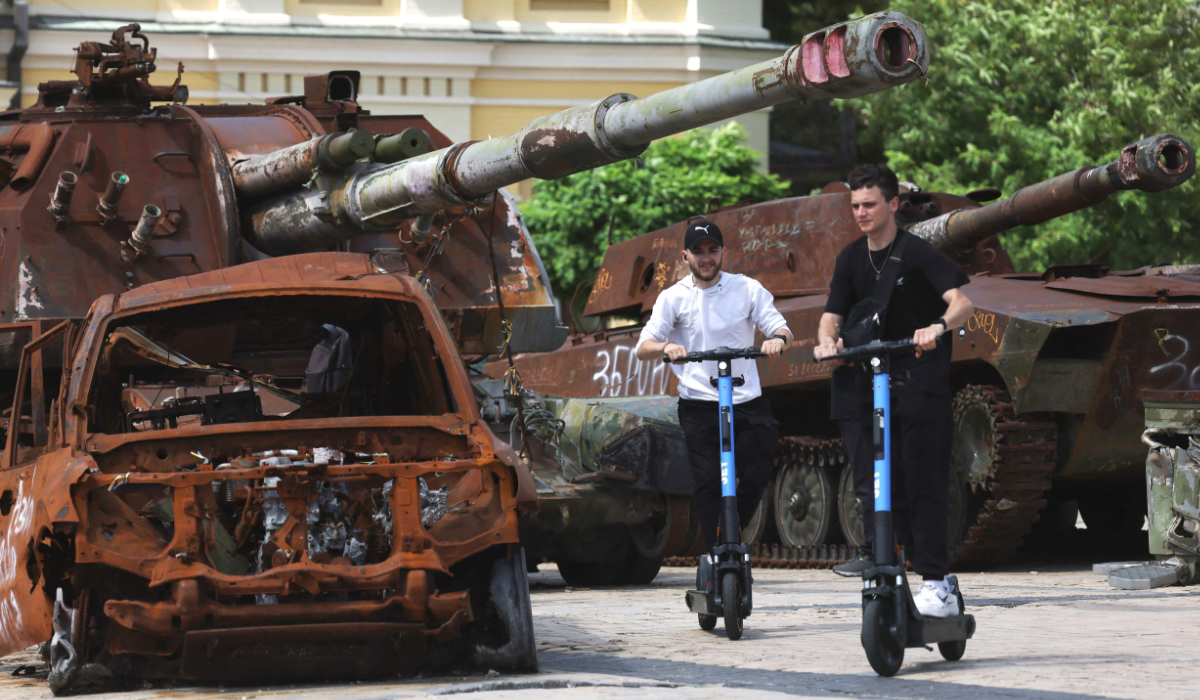UNITED NATIONS: United Nations Secretary-General Antonio Guterres on Tuesday named and shamed Israel’s armed and security forces, Palestinian militants Hamas and Islamic Jihad, and Sudan’s warring parties for killing and maiming children in 2023, adding them to an annual global list of offenders for violations against children.
In a report to the UN Security Council — seen by Reuters — Guterres also called out the armed forces of Israel and Sudan for attacking schools and hospitals and Hamas and Islamic Jihad for abducting children.
The paramilitary Rapid Support Forces, who have been fighting the Sudanese armed forces since April last year, was also named for recruiting and using children, committing rape and other sexual violence and attacking schools and hospitals.

Palestinians take control of an Israeli Merkava battle tank after crossing the border fence with Israel from Khan Yunis in the southern Gaza Strip on October 7, 2023. (AFP)
The report, compiled by Guterres’ envoy for children and armed conflict Virginia Gamba, covers six grave violations — killing and maiming, sexual violence, abduction, recruitment and use, denial of aid and attacks of schools and hospitals.
The list attached to the report aims to shame parties to conflicts in the hope of pushing them to implement measures to protect children. It only reports on violations verified by the United Nations.
“In 2023, violence against cildren in armed conflict reached exreme levels, with a shocking 21 percent increase in grave violations,” the report read. “The number of instances of killing and maiming increased by a staggering 35 percent.”

Sudanese soldiers from the Rapid Support Forces unit, led by Gen. Mohammed Hamdan Dagalo. (AP file photo)
“The highest numbers of grave violations were verified in Israel and the Occupied Palestinian Territory, the Democratic Republic of Congo, Myanmar, Somalia, Nigeria and Sudan,” found the report, describing verification as “extremely challenging.”
Russia’s armed forces and affiliated groups stayed on the list, after being added last year, for killing and maiming children in Ukraine and attacking schools and hospitals.
Russia’s UN mission did not immediately respond to a request for comment, but Moscow has denied targeting civilians since it invaded Ukraine in 2022.
GAZA, SUDAN, UKRAINE
Israel’s UN envoy Gilad Erdan said on Friday he had been notified that Israel’s military had been added to the list, describing the decision as “shameful.” Hamas and Palestinian Islamic Jihad could not immediately be reached for comment.

Palestinian father Ashraf holds one of his two daughters after they were both killed in an overnight Israeli air strike, on April 4, 2024 at al-Najar hospital in Rafah, in the southern Gaza Strip, amid the ongoing conflict between Israel and the Palestinian Islamist group Hamas. (AFP)
The report attributed 5,698 violations to Israel’s armed and security forces, 116 to Hamas and 21 to Palestinian Islamic Jihad.
The UN verified the killing of 2,267 Palestinian children — most in Gaza between Oct. 7 and Dec. 31 — but said the process of determining attribution was ongoing, adding: “Most incidents were caused by the use of explosive weapons in populated areas by Israeli armed and security forces.”
So far, it said Israel’s armed and security forces were responsible for killing 206 children. The UN verified 136 violations against Israeli children, attributing 116 to Hamas.
There were 371 verified attacked on schools and hospitals in 2023, of which Israel’s forces were responsible for 340, according to the report. The UN also verified five instances of military use of ambulances by Israeli forces and one case where Hamas had used a health center for military purposes.

Youths ride scooters past destroyed Russian military equipment on Mykhailivska Square in the center of Kyiv on June 11, 2024, amid the Russian invasion in Ukraine. (AFP)
Israel is retaliating against Hamas over an Oct. 7 attack by its militants. More than 1,200 people were killed and over 250 taken hostage by Hamas on Oct. 7, according to Israeli tallies. More than 100 hostages are believed to remain captive in Gaza.
Israel’s invasion and bombardment of Gaza since then has killed more than 37,000 people, according to Gaza’s health ministry. Thousands more are feared buried dead under rubble, with most of the 2.3 million population displaced.
In Sudan, the UN verified 1,721 violations — including the killing of 480 and maiming of 764, most during crossfire between the Sudanese armed forces and the Rapid Support Forces. It also verfied 85 attacks on schools and hospitals.
Sexual violence was verified against 114 girls in Sudan, of which the UN said the RSF was responsible for 57 cases.
Sudan’s armed forces and the RSF did not immediately respond to a request for comment.
In Ukraine, the UN verified the killing of 80 children and maiming of 339 — of those it said Russian forces were responsible for killing 59 and maiming 228.
It also attributed 249 attacks on schools and hospitals to Russian forces and 70 such attacks to the Ukrainian armed forces, who also used two schools and one hospital for military purposes.






























